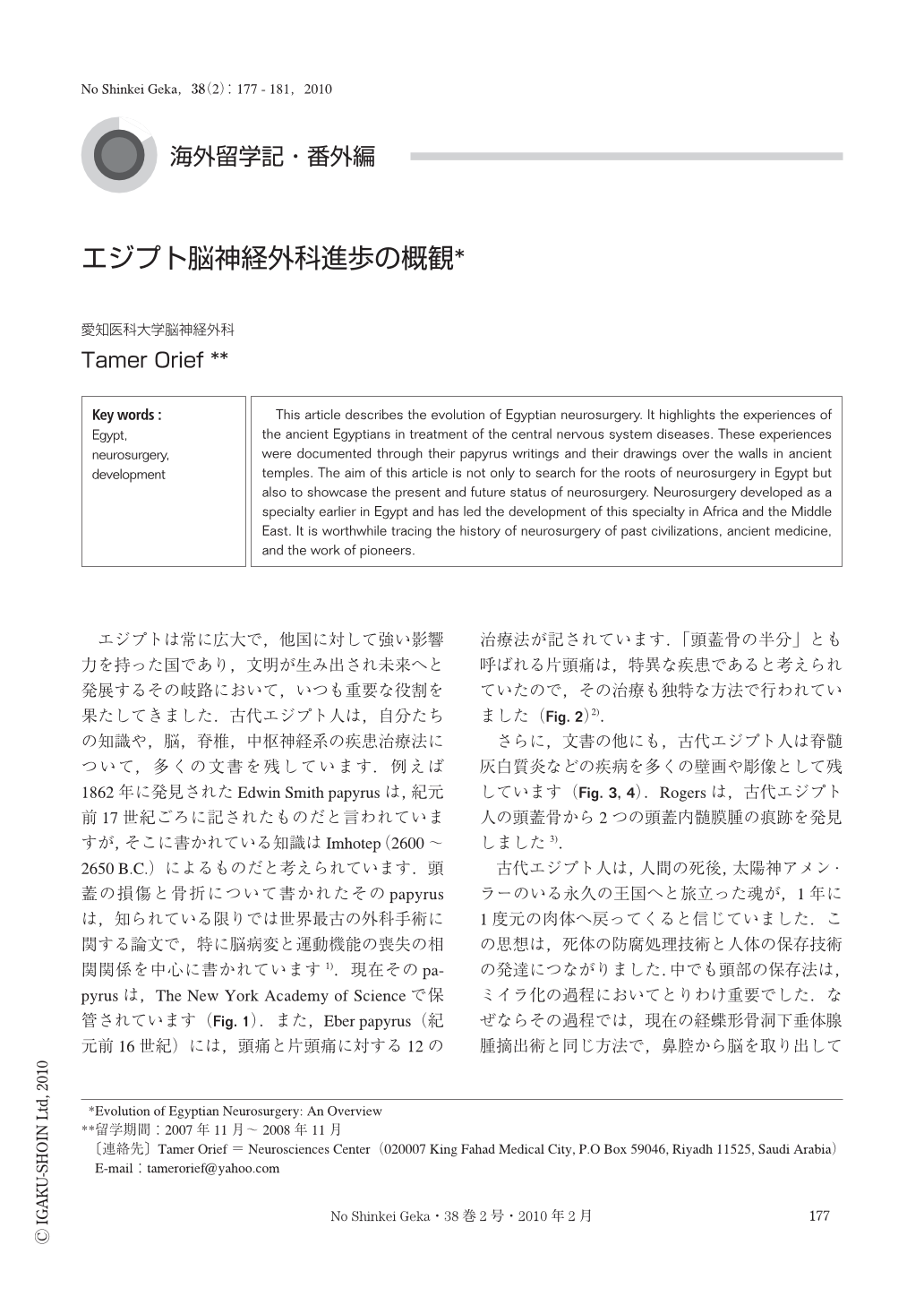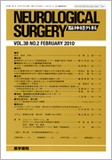Japanese
English
- 有料閲覧
- Abstract 文献概要
- 1ページ目 Look Inside
- 参考文献 Reference
エジプトは常に広大で,他国に対して強い影響力を持った国であり,文明が生み出され未来へと発展するその岐路において,いつも重要な役割を果たしてきました.古代エジプト人は,自分たちの知識や,脳,脊椎,中枢神経系の疾患治療法について,多くの文書を残しています.例えば1862年に発見されたEdwin Smith papyrusは,紀元前17世紀ごろに記されたものだと言われていますが,そこに書かれている知識はImhotep(2600~2650 B.C.)によるものだと考えられています.頭蓋の損傷と骨折について書かれたそのpapyrusは,知られている限りでは世界最古の外科手術に関する論文で,特に脳病変と運動機能の喪失の相関関係を中心に書かれています1).現在そのpapyrusは,The New York Academy of Scienceで保管されています(Fig. 1).また,Eber papyrus(紀元前16世紀)には,頭痛と片頭痛に対する12の治療法が記されています.「頭蓋骨の半分」とも呼ばれる片頭痛は,特異な疾患であると考えられていたので,その治療も独特な方法で行われていました(Fig. 2)2).
さらに,文書の他にも,古代エジプト人は脊髄灰白質炎などの疾病を多くの壁画や彫像として残しています(Fig. 3, 4).Rogersは,古代エジプト人の頭蓋骨から2つの頭蓋内髄膜腫の痕跡を発見しました3).
This article describes the evolution of Egyptian neurosurgery. It highlights the experiences of the ancient Egyptians in treatment of the central nervous system diseases. These experiences were documented through their papyrus writings and their drawings over the walls in ancient temples. The aim of this article is not only to search for the roots of neurosurgery in Egypt but also to showcase the present and future status of neurosurgery. Neurosurgery developed as a specialty earlier in Egypt and has led the development of this specialty in Africa and the Middle East. It is worthwhile tracing the history of neurosurgery of past civilizations, ancient medicine, and the work of pioneers.

Copyright © 2010, Igaku-Shoin Ltd. All rights reserved.


